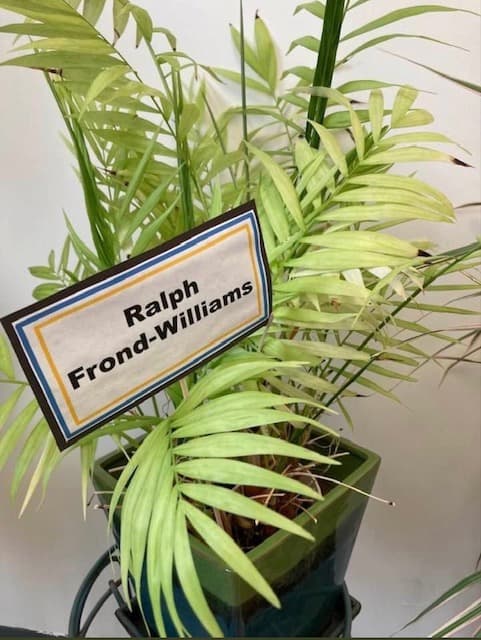It's all about the classical music composers and their works from the last 400 years and much more about music. Hier erfahren Sie alles über die klassischen Komponisten und ihre Meisterwerke der letzten vierhundert Jahre und vieles mehr über Klassische Musik.
Total Pageviews
Friday, October 27, 2023
Andy Williams- Burt Bacharach Medley (1968)
Jazz Standards Medley (Fly Me To The Moon, Autumn Leaves, Misty,)
The Success in Failure
by Frances Wilson, Interlude

“Innovation requires failure. Learning is the only process that turns failure into success.”
– Dr Samuel West, creator of The Museum of Failure
Despite knowing that we can learn from our own mistakes, most of us fear failure, and fear the reactions to that failure – ridicule from family, friends, colleagues, embarrassment, personal disappointment and depression. As musicians, setbacks and failure can have a profound effect on how we approach our music making and professional career. If we perceive failure as humiliation, it can paralyse our ability to learn and develop, but if we can separate our ego from the failure or setback, we can use the experience positively as an informed learning process to shape our future approach, make us stronger and motivate us to work harder and smarter. Sadly for many of us, the “wrongness” of making mistakes is inculcated in us from a young age – by parents, teachers, and peers – and such prejudices combined with a constricted mindset leads us to blame and criticise ourselves for our failings.
The problem for many musicians is that our music and our instrument are crucially entwined with our identity and setbacks can therefore feel like a very personal attack. But if we are able to see what we do as ‘work’, and not allow it to define us as a person, we can take a more objective approach to mistakes and setbacks.

Failure is part of creativity and mastery. Without it we cannot learn, explore, experiment, expand our horizons, and, importantly, progress. By removing emotion and adopting a more positive mental attitude, we can turn failures into successes and become more creative and motivated to succeed. Neuroscientists have found that the parts of our brain responsible for self-monitoring are actually switched off when we are being creative. Thus, by being creative, negative feelings connected with failure can be turned down, allowing the brain to think clearly and spark new ideas and approaches.
My students don’t believe me when I tell them there is a book called The Perfect Wrong Note, which celebrates mistakes and what we can learn from them. In our day-to-day practise, mistakes should be regarded as opportunities for evaluation, reflection and refinement.
Mistakes show we are human, and fallible, that it’s ok to have an off day when your playing and practising may not go as well as usual. Giving ourselves permission to make mistakes allows us to be fulfilled by our music and to feel empowered about our practising. A willingness to make mistakes teaches us to be self-critical, but in a positive, productive way.
Mistakes and failures contain all the information needed for learning – if we are willing to use it – and as the Museum of Failure demonstrates, failure is a crucial part of innovation, creativity and progress.
There is no such thing as failure — failure is just life trying to move us in another direction……Learn from every mistake. Because every experience, encounter, and particularly your mistakes are there to teach you and force you into being more of who you are.
– Oprah Winfrey
Isn’t it Time for More Entertaining Musical Puns?
by Janet Horvath, Interlude
The quips seem to fit into themes, there are viola and conductor jokes, performance anxiety and nightmare jokes, plays on the titles of pieces jokes as I’ve shown in previous punny articles ( see the links below). You don’t really think I’ve exhausted them all, do you?
I’d like to take a moment to draw your attention to the clever food-themed jokes I’ve come across. The play on composer’s names is especially ingenious.

It is Thyme to begin with herbs and spices before we turn on the Beeth-oven.
We should add these from popular music:
Frank Cilantro, Bob Dillan, Elvis Parsley, Herb Alpert, Scarlet Chives, and Rosemary Clooney.
And from contemporary music:
John Sage
Count on conductors to always add spice:
Herbert von Caraway, and Sage-y-Ozawa
Our dish of course would include fruits and vegetables as well as a little Florence Rice. But if you’re making a Risotto alla Milanese a pinch of Lalo Saffron would be yummy.
Consider some Bach choy, Peter Pears, or even more fresh, Arvo Pear-t (Okay that’s a stretch!) or substitute an Amy Peach.

It’s lovely to sip a favorite beverage such as Chai-Koffee and to have a slice of pizza-cato while you wait.

And don’t forget to water your Ralph frond-Williams while you set the table with a bouquet of Joan Flower.

We musicians do love to get together to play some chamber music but don’t forget to call the piano tuna.

During a break, serve some lovely foods for the occasion but beware of mistaking a Paganini Caprice for a Caprese Panini. For dessert, serve Bachlava. Groan…
I’ll leave you with one important thought. Whether you end up a dead-beat and baroque, or your life’s a symphony, be in tune with the fact that without music life would B-flat.

For those of you who didn’t “get” some of these plays on words, here is the key!
Frank Sinatra: American singer and actor, one of the most popular entertainers of the mid-20th century who sold 150 million records.
Bob Dylan: American singer-songwriter regarded as one of the greatest ever. Recipient of the Presidential Medal of Freedom and the 2016 Nobel Prize in Literature.
Elvis Presley: “Elvis” Cultural icon, American Singer and actor, “King of Rock and Roll”, and one of rock’s dominant performers.
Herb Alpert: American creator, innovator, producer, and philanthropist, he is a trumpeter who led the band Herb Alpert & the Tijuana Brass in the 1960s.
Scarlet Chives: the Danish pop group who make soundscapes. Their debut album was in 2011.
Rosemary Clooney: Singer and actress prominent in the 1950s and her name just works! (She is the aunt of George Clooney the actor).
John Cage: American composer and music theorist. A pioneer in experimentation, the avant-garde, and the non-standard use of musical instruments or objects instead of musical instruments, well-known for his 4’ 33” work of all silence.
Herbert von Karajan: Austrian-born symphonic and opera conductor, maestro of the Berlin Philharmonic for 34 years, and a leading musical figure of the 20th century.
Seiji Ozawa: The Japanese conductor known for his advocacy of modern composers and his work with the San Francisco Symphony, the Toronto Symphony, and the Boston Symphony.
Boris “Lalo” Schifrin: The Argentine pianist, composer, arranger, and conductor who has a large body of film and TV scores and incorporates jazz and Latin American elements.
Florence Price: American classical composer, pianist, organist, and music teacher, the first black woman to have a symphony performed by a major American orchestra in 1933.
J. S. Bach: Johann Sebastian Bach a German composer of the Baroque period known for his outstanding ability as a harpsichordist, organist, and organ builder, and is regarded as one of the greatest composers of all time.
Sir Peter Pears: An English tenor whose career was closely associated with composer Benjamin Britten, his professional partner for 40 years. He founded the Aldeburgh Festival in 1948 and was the festival’s artistic director.
Arvo Pärt: Estonian composer of contemporary music in the minimalist style and inspired by Gregorian chant.
Tchaikovsky: Pyotr Ilyich was a Russian composer during the Romantic period. His works include extremely popular works such as the 1812 Overture, the Nutcracker, and Swan Lake ballets, and his piano and violin concertos.
Pizzicato: The Italian term to indicate plucking the string.
Ralph Vaughan Williams: English composer of operas, ballets, chamber music, secular and religious vocal pieces, and orchestral works.
Joan Tower: American composer, concert pianist, and conductor. Considered one of the most distinguished of woman composers.
Amy Beach: One of the first successful American female composers of large-scale music. Her “Gaelic” Symphony was premiered by the Boston Symphony in 1896—the first symphony composed and published by an American woman.
Paganini Caprices: Niccolò Paganini composed his 24 Caprices for Solo Violin between 1802 and 1817. They are written in the form of études and are extremely virtuosic and flashy pieces testing even the most seasoned violinist.
Baklava: is a delicious Greek dessert made up of layers of phyllo dough and filled with honey and nuts.